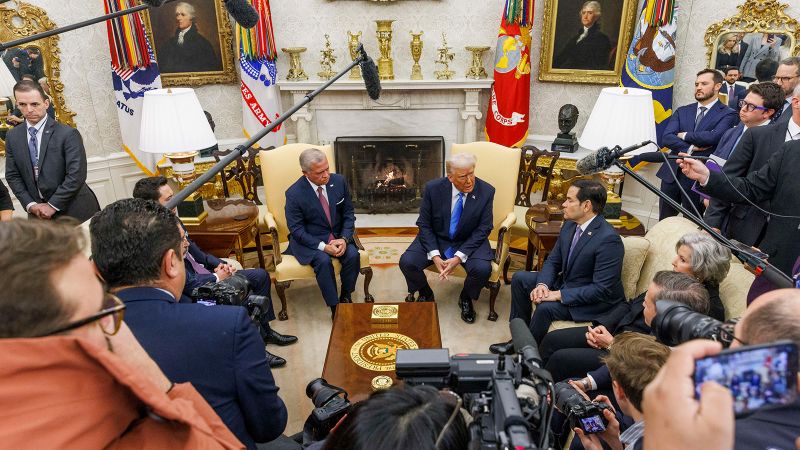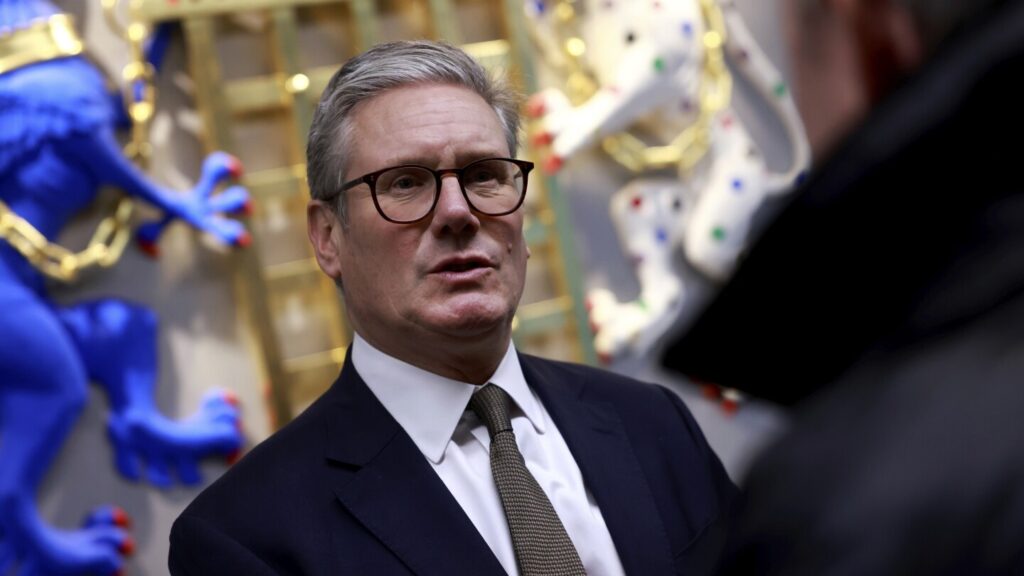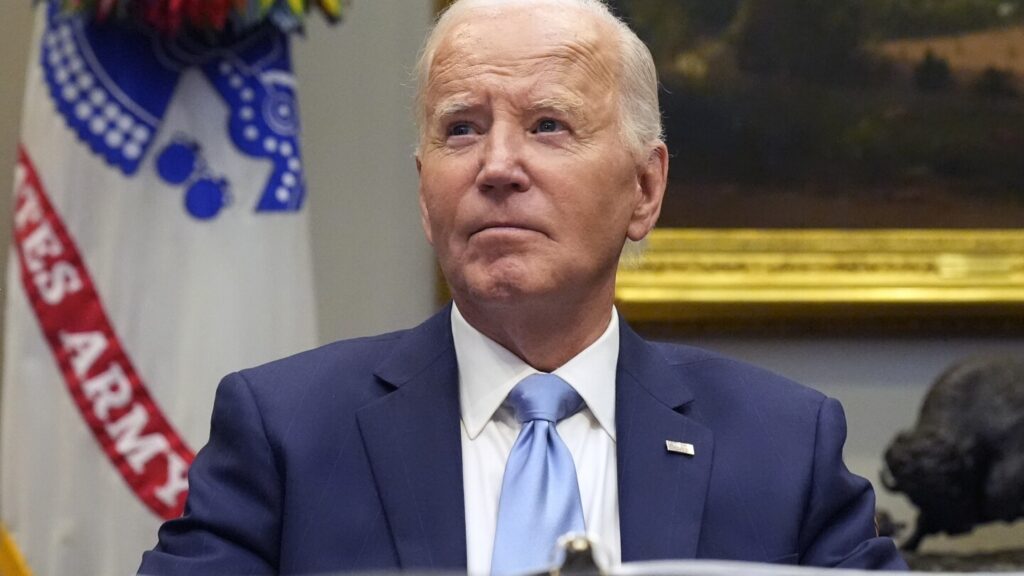Gaza’s only concert grand piano becomes image of hope
 Khamis Abu Shaban
Khamis Abu ShabanThere is one image that keeps a Gaza musician going like no other – that of the territory’s only concert grand piano.
Khamis Abu Shaban had finally risked returning to the music school at which he taught – and which owns the piano – a few months into the current conflict.
What he saw, at the Gaza branch of the Palestinian music school, the Edward Said National Conservatory of Music, was “a catastrophe”.
“More than half of the Conservatory was burned. All the instruments were broken, thrown outside. You start seeing cases of instruments as soon as you get close to the Conservatory on the streets. Violins, we had more than 50, completely smashed. Cellos, more than 40, completely smashed.”
 Khamis Abu Shaban
Khamis Abu ShabanAltogether, the Gaza branch of the Conservatory used to have more than 400 instruments – both Western classical ones and traditional Arabic instruments such as the oud, qanun and nay, a type of flute. Khamis says he felt “completely destroyed”.
But then he saw something which lifted his spirits.
“The only… instrument that I saw standing was the grand piano. Honestly, I smiled when I saw it. I smiled and I laughed.”
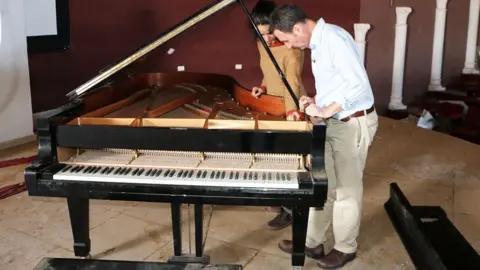 John Murphy / BBC
John Murphy / BBCThe Yamaha concert grand also withstood bombing in a previous war between Israel and Gaza’s rulers – Hamas – in 2014, and was carefully restored the following year by a French music technician. It became a symbol for many of aspirations that the territory could develop a flourishing musical culture.
“I started talking to the piano,” says Khamis. “I asked: ‘Are you the only survivor of all the instruments? You don’t want to die?’ I really laughed.”

Tim Whewell reported from Gaza in 2015 on the rescue of the territory’s only concert grand piano after a previous war. Now, he finds out how musicians he met then are living and working through this war. He learns about a boy who started playing the violin after he lost his hand in an airstrike. And he finds out about the second near-miraculous survival of the grand piano.
It is too dangerous for the teachers and students to resume lessons at the music school, because of Israeli military operations in the area around it in north-west Gaza. Instead, they have started giving music lessons to tens of thousands of displaced children living in the makeshift camps where many Gazans now reside.
They teach outdoors, under canvas awnings, or in schools and shelters run by UNRWA, the United Nations agency that supports Palestinian refugees.
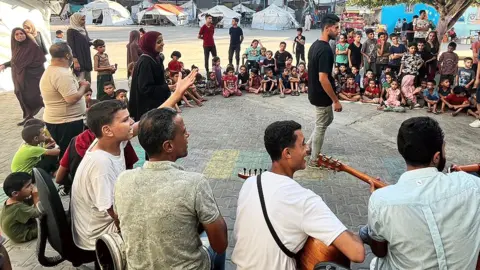 Jaber Thabet / Edward Said National Conservatory of Music
Jaber Thabet / Edward Said National Conservatory of Music“Life goes on, and even with all this death around us, people need anything that can make them… not happy – no-one will be happy in this period – but something that can make them smile, be able to continue with life,” Khamis says.
The teachers – who are using whatever borrowed instruments they can find – include former students of the Conservatory, such as 16-year-old violinist Sama Nijim. One of her students is Mohammed Abu Eideh, a boy who lost his right hand in an airstrike.
He used to play the oud – his favourite instrument – but this requires two hands. So Sama devised a way for him to learn violin instead – by tying a violin bow to his arm with a scarf, so that he could bow without the use of a hand.
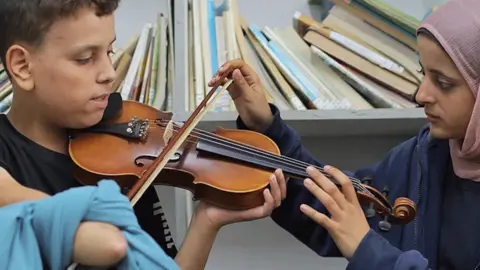 Jaber Thabet / Edward Said National Conservatory of Music
Jaber Thabet / Edward Said National Conservatory of MusicSuch versatility on the part of the staff can also be seen in teacher Osama Jahjouh’s fashioning of a nay – or traditional flute – out of a plastic pipe, because the Conservatory nays have been lost.
Fuad Khader, who created a children’s choir in Jabaliya refugee camp in the north of Gaza, says that at first it was difficult to persuade parents to let their children take part in the activities.
“They asked: ‘People are dying, and you want to teach kids to sing?’” he says. “But I just told them: ‘Everyone has to do something. I’m a musician. And this is my job.’”
Another teacher, Ahmed Abu Amsha, says the music lessons had a transformative effect on the children.
“After a week, the families came to me and told me: ‘You have changed our kids. They are getting better. They are singing, they are laughing.’”
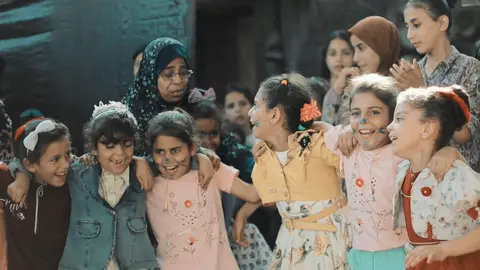 Edward Said National Conservatory of Music
Edward Said National Conservatory of MusicBut he adds: “Sometimes we are singing a song – and suddenly there’s a big explosion, that makes us go silent and look at each other. And I say: ‘Don’t worry, let’s continue.’ I have to be strong in front of the children. And in some moments, they forget they are in a war.
“But when they go, I’m not strong,” he says.
“It’s like I’m sucking the bad energy from the kids. And when I try to go to sleep, it’s a horrible feeling… [I will be] thinking of a kid – how he’s seen dead bodies in the street, and his father is dead, and his sister and his uncle… Each child has a story to tell, and I try to heal them.”
As for the grand piano, Khamis Abu Shaban hopes students will one day be able to play it again.
 Osama Jahjouh / Edward Said National Conservatory of Music
Osama Jahjouh / Edward Said National Conservatory of MusicHe says that when he last saw it, several months into the war, he lifted the lid and found that some of the strings had been cut and some of the hammers broken.
“I’m familiar with how an instrument can be damaged,” he said. “A hammer cannot be broken just by shock waves, for example. Someone has opened it and started sabotaging the inside.”
But Khamis’ delight at having seen the piano is undiminished.
“Now, I see it still standing in front of me,” he laughs. “It’s telling me: ‘I’m not one to die. I’m still here for you. And I will stay.’”



